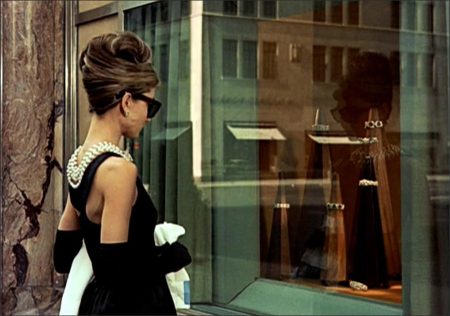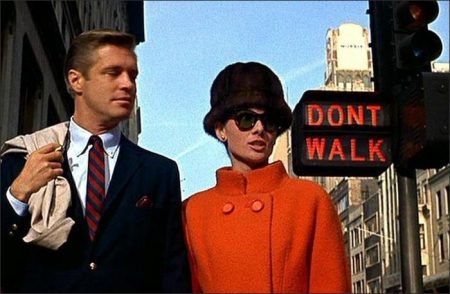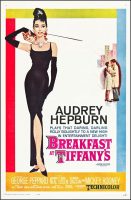Breakfast at Tiffany’s movie storyline. Holly Golightly is a flighty Manhattan party girl, who expects “money for the powder room as well as for cab fare” for her companionship. She has even gotten a lucrative once weekly job to visit notorious convict Sally Tomato in Sing Sing, she needing to report back to Sally’s lawyer the weather report that Sally tells her as proof of her visits with him in return for payment.
Her aspirations for glamor and wealth are epitomized by the comfort she feels at Tiffany’s, the famous high end jewelry retailer where she believes nothing can ever go wrong. Her resolve for this wealth is strengthened, if not changed slightly in focus, upon news from home. Into Holly’s walk-up apartment building and thus her life is Paul Varjak, a writer who Holly states reminds her of her brother Fred, who she has not seen in years and who is currently enlisted in the army. The two quickly become friends in their want for something outside of their current lot.

Paul’s situation is closer to Holly’s than he would like to admit. Having not had anything published in over five years, he is a kept man by his wealthy married “decorator”, Emily Eustace Failenson – who he refers to as 2E – which allows him not to write, which he no longer truly does. Eventually, Paul falls for Holly, and wants to take care of her, instead of being taken care of as is his current situation. Although Holly also seems to be falling for him, the question becomes whether Paul can fulfill Holly’s life aspirations, and if not what needs to change for there even to be the possibility of a future for them.
Breakfast at Tiffany’s is a 1961 American romantic comedy film directed by Blake Edwards and written by George Axelrod, loosely based on Truman Capote’s novella of the same name. Starring Audrey Hepburn and George Peppard, and featuring Patricia Neal, Buddy Ebsen, Martin Balsam, and Mickey Rooney, the film was initially released on October 5, 1961 by Paramount Pictures.
Hepburn’s portrayal of Holly Golightly as the naïve, eccentric socialite is generally considered to be the actress’s most memorable and identifiable role. Hepburn regarded it as one of her most challenging roles, since she was an introvert required to play an extrovert.
Breakfast at Tiffany’s was received positively at the time, and won two Academy Awards: Best Original Score and Best Original Song for “Moon River”, which was also selected as the fourth most memorable song in Hollywood history by the American Film Institute in 2004. The film was also nominated for three other Academy Awards: Best Actress for Hepburn, Best Adapted Screenplay, and Best Art Direction.
Breakfast at Tiffany’s (1961)
Directed by: Blake Edwards
Starring: Audrey Hepburn, George Peppard, Patricia Neal, Buddy Ebsen, Martin Balsam, José Luis de Vilallonga, John McGiver, Dorothy Whitney, Stanley Adams, Elvia Allman, Beverly Powers
Screenplay by: George Axelrod
Cinematography by: Franz Planer, Philip H. Lathrop
Film Editing by: Howard A. Smith
Set Decoration by: Sam Comer, Ray Moyer
Art Direction by: Roland Anderson, Hal Pereira
Music by: Henry Mancini
Distributed by: Paramount Pictures
Release Date: October 5, 1961
Views: 222

